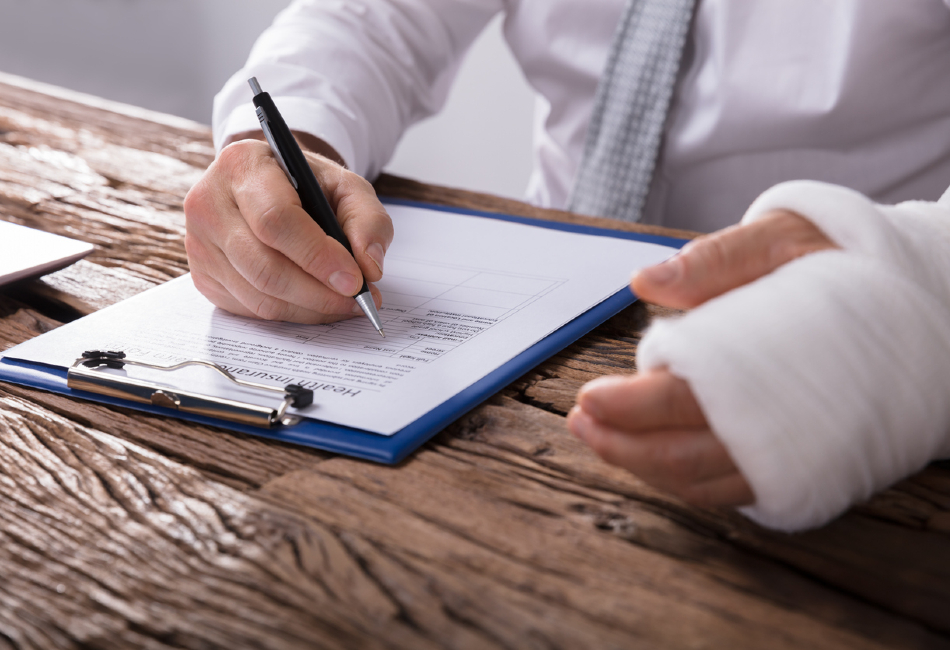Accidents can happen when least expected, and they often lead to physical injuries, emotional distress, and financial setbacks. When you are injured due to the negligence of another, you can submit a personal injury claim to receive compensation. Navigating the legal process might seem daunting, but with the right guidance and understanding, you can navigate the path toward justice.
Step 1: Seek Immediate Medical Attention
The first and foremost step after sustaining a personal injury is seeking medical attention. Your health is of paramount importance, and documenting your injuries will provide critical evidence for your claim. Even seemingly minor injuries could have long-term consequences, so don’t delay seeking medical help. This initial medical documentation will later be vital in linking your injuries to the accident.
Step 2: Gather Evidence
The success of your personal injury claim heavily relies on the evidence you gather. Document the accident scene with photographs, collect contact information of witnesses, and make notes of the events that transpired. Additionally, keep records of medical bills, treatment plans, and any other expenses related to your injuries. This evidence will help establish the negligence of the responsible party and the extent of your damages.
Step 3: Consult A Personal Injury Lawyer
Navigating the legal intricacies of a personal injury claim can be complex, which is why consulting a personal injury lawyer is highly recommended. A personal injury lawyer specializes in these cases, understands the legal nuances, and can provide you with valuable guidance. They will review your case, assess the strength of your claim, and provide an initial strategy.
Step 4: Case Evaluation And Legal Strategy
Your personal injury lawyer will look at your case very carefully. They’ll consider factors such as liability, negligence, and the extent of your damages. Based on this evaluation, they’ll develop a legal strategy tailored to your specific circumstances. This strategy might involve negotiations with the at-fault party’s insurance company or preparing for litigation.
Step 5: Demand Letter And Negotiations
If a settlement may be achieved outside of court, your personal injury attorney will issue a demand letter to the insurance company of the person who caused the accident. This letter describes the accident, the severity of your injuries, and the amount of compensation you are pursuing. Negotiations will follow, with your lawyer advocating for your rights and pursuing a fair settlement that covers your medical bills, lost wages, pain, and suffering.
Step 6: Filing A Lawsuit
If negotiations are unsuccessful, your personal injury attorney may advise you to file a lawsuit. This involves preparing a formal complaint and initiating legal proceedings. Throughout this process, your lawyer will guide you, ensuring all necessary documentation is filed correctly and within the statute of limitations.
Step 7: Discovery And Pre-Trial Preparation
During the discovery phase, both parties exchange relevant information and evidence. Your personal injury lawyer will work to gather evidence, depose witnesses, and build a strong case. They will also explore opportunities for settlement throughout this phase. If a fair settlement is not reached, the case proceeds to trial.
Step 8: Trial And Resolution
If your personal injury case proceeds to trial, your attorney will present your case to the judge and jury. They will advocate for you, provide evidence, and cross-examine witnesses. Even though most cases of personal injury are handled out of court, you need an experienced personal injury lawyer on your side to make a strong case.
Conclusion
Understanding the step-by-step process of filing a personal injury claim is essential for seeking the compensation you deserve after an accident. You may confidently navigate the complexity of the legal system with the help of an experienced personal injury lawyer. Having an advocate who specializes in personal injury law may dramatically boost your chances of a favorable outcome, from gathering evidence to negotiating settlements and even going to trial. If you find yourself in such a situation, don’t hesitate to consult a personal injury lawyer to ensure your rights are protected and your interests are well-represented throughout the process.

